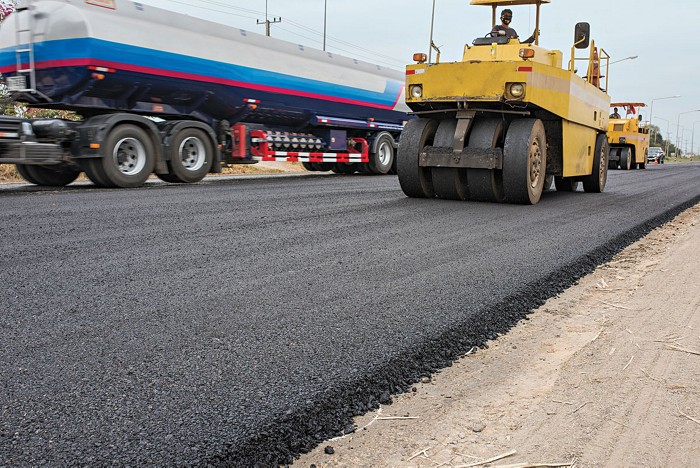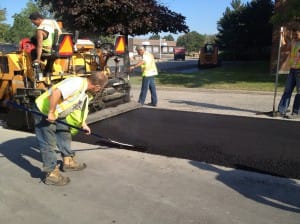Some Of A1 Professional Asphalt & Sealing Llc
Some Of A1 Professional Asphalt & Sealing Llc
Blog Article
Things about A1 Professional Asphalt & Sealing Llc
Table of ContentsThe 5-Minute Rule for A1 Professional Asphalt & Sealing LlcThe smart Trick of A1 Professional Asphalt & Sealing Llc That Nobody is Discussing7 Easy Facts About A1 Professional Asphalt & Sealing Llc DescribedThe smart Trick of A1 Professional Asphalt & Sealing Llc That Nobody is DiscussingA1 Professional Asphalt & Sealing Llc for Dummies
In its make-up, asphalt is composed mainly of Asphalt integrated with numerous kinds of aggregate, such as sand or crushed rock. Sidewalk, alternatively, is a sort of concrete that has aggregates, cement, and water. a-1 asphalt. Relying on the location and use of the utilized pavement product, a mixture of different chemical admixtures may be included in make it a lot more long lasting
What is the difference between asphalt and blacktop driveways? Blacktop is a mix of stone, sand, and gravel topped with asphalt. Blacktop is developed to produce an even surface due to its increased resistance to weathering and capacity to birth much heavier tons. What is the difference between asphalt concrete sidewalk and concrete? Pavement can be made from either asphalt or concrete, with asphalt being smoother and a lot more resistant as a result of its binder, while concrete hardens through the curing procedure but has a tendency to use down over time due to weathering.
The Main Principles Of A1 Professional Asphalt & Sealing Llc
Exactly how do I keep my asphalt driveway? The most crucial component of keeping an asphalt driveway is making certain it's appropriately secured.
Asphalt and sidewalk are common components on streets everywhere. Despite their similarities, these 2 products have some crucial differences that make each suitable for various conditions.
Comprehending these distinctions can assist ensure a suitable decision is made when selecting a surface area remedy. You can learn more short articles like this one here.
The Only Guide to A1 Professional Asphalt & Sealing Llc
Recently, State freeway agencies and FHWA were amazed by a discovery: The clandestine usage of re-refined engine oil bases in asphalt is extensive. Simon Hesp, Queens University (Kingston, Ontario) Asphalt is the sticky black residue that is left over from the handling of crude oil. It has actually been made use of in leading for more than a a century.

The asphalt, which functions as the pavement's binder, is likewise the most costly component of the cost of the material for paving roads. The weight of an asphalt sidewalk varies relying on the accumulation type, the asphalt, and the air gap web content. Making use of a typical instance of 112 extra pounds per square yard per inch of density, a 1-mile (1.6-kilometer)-long, four-lane highway with a 4-inch (10-centimeter) lift and 12-foot (3.6-meter)-wide lanes evaluates regarding 6,300 bunches (5,700 metric heaps).
The 300 bunches of asphalt in 2002 would have cost around $48,000. By 2006 this would certainly have raised to $96,000 and by 2012 to $183,000. That is an increase of about $135,000 for every mile of freeway in just ten years. The rising rate of asphalt had a significant influence on the expense of creating sidewalks, which boosted passion in discovering methods to minimize costs.
The Of A1 Professional Asphalt & Sealing Llc
RAP already contains asphalt, albeit aged material that does not have the same properties of fresh asphalt. During a corridor conversation at a 2010 technological conference, Matt Mueller, after that a State engineer of materials from Illinois, disclosed that his division of transport had located phosphorous in one of the asphalt binders it was purchasing.

The supplier denied including PPA, but decreased to reveal what had actually been included in the binder. When pressed by the department of transport, the vendor revealed that it was including what it called an asphalt extendernow understood to be re-refined engine oil bases (REOB). REOB consists of a percentage of phosphorus, which is what department drug stores originally recognized.
"No one recognized this material was being included in asphalt, had seen any type of research on exactly how this might impact performance of hot-mix asphalt pavements, or knew for the length of time and just how widely it was being utilized throughout the nation," says Mueller. After conversations at the technical conference, he says, "It rapidly went from being simply a problem in Illinois to becoming a nationwide and international problem." Component of the objective of the Chemistry Laboratory at TFHRC is to establish new test methods.
The residential or commercial properties of asphalt binders vary extensively depending on the source of the crude oil and the refining procedure utilized. For low winter months temperature levels, softer asphalts are essential to stay clear of cracking.
See This Report about A1 Professional Asphalt & Sealing Llc
A device called a vibrant shear rheometer (DSR) was presented to the market throughout the Strategic Freeway Study Program's study project, which ran from 1987 to 1992. The DSR is currently the market standard for measuring the viscoelastic properties of paving asphalt. The machine was not developed for the paving market (https://medium.com/@a1asphaltsealng/about).
For instance, useful source the DSR allows item designers to produce tooth paste with the right uniformity so that it can be pressed from a tube yet not diminish the tooth brush. The DSR examinations binder placed between two identical plates about the size of a quarter. Among the plates relocations and the machine gauges the viscoelastic residential properties of the asphalt.
Report this page